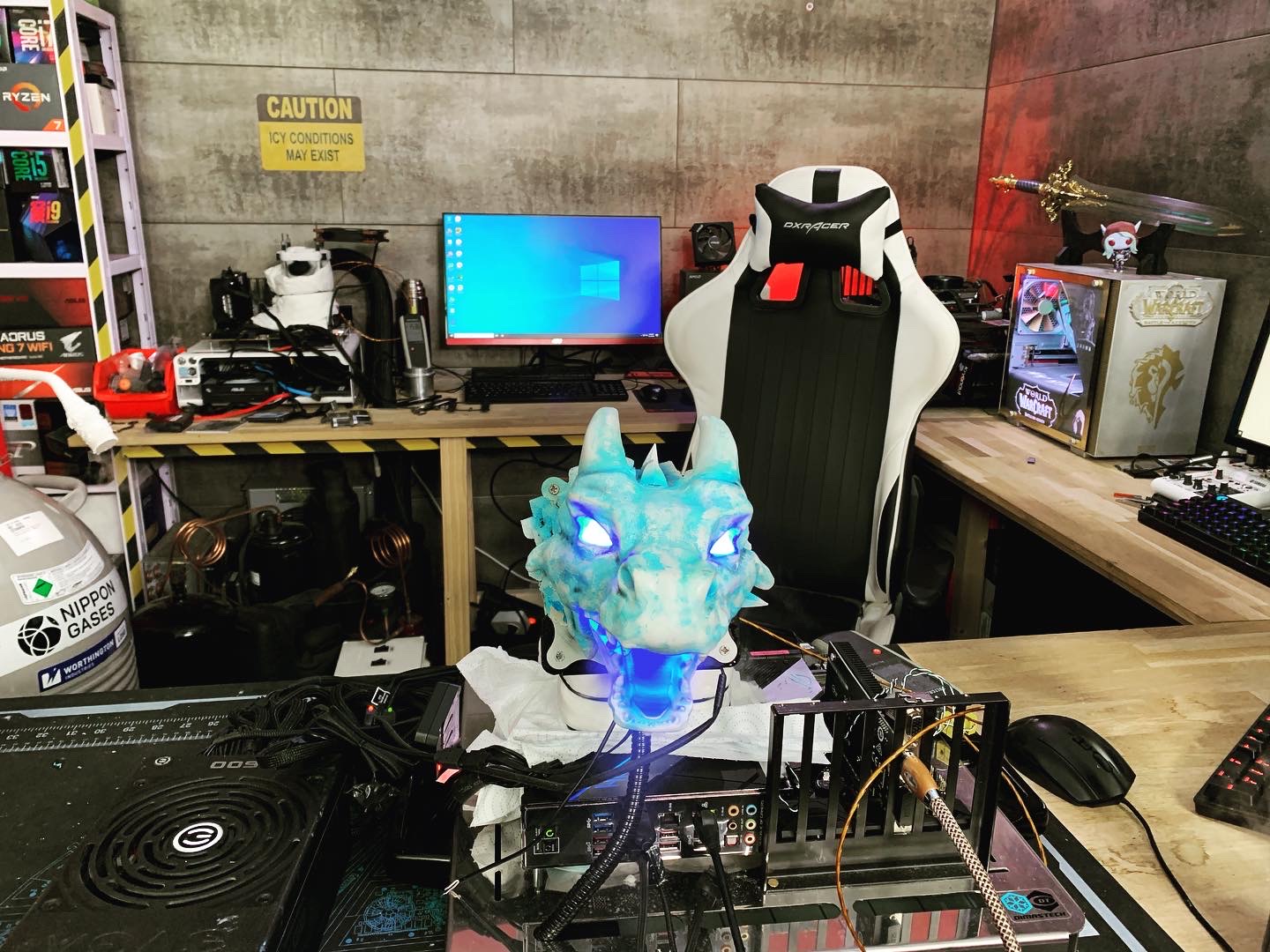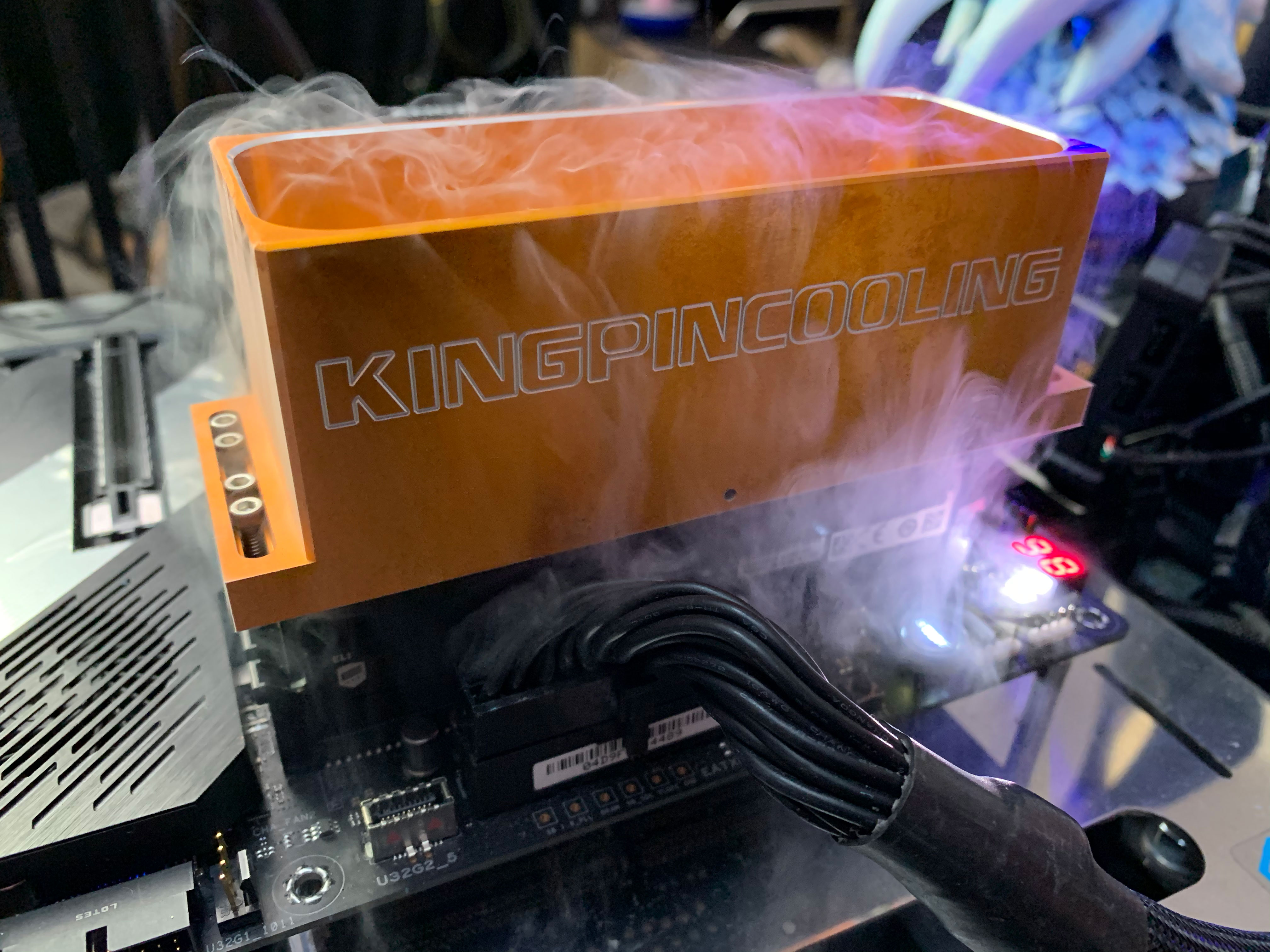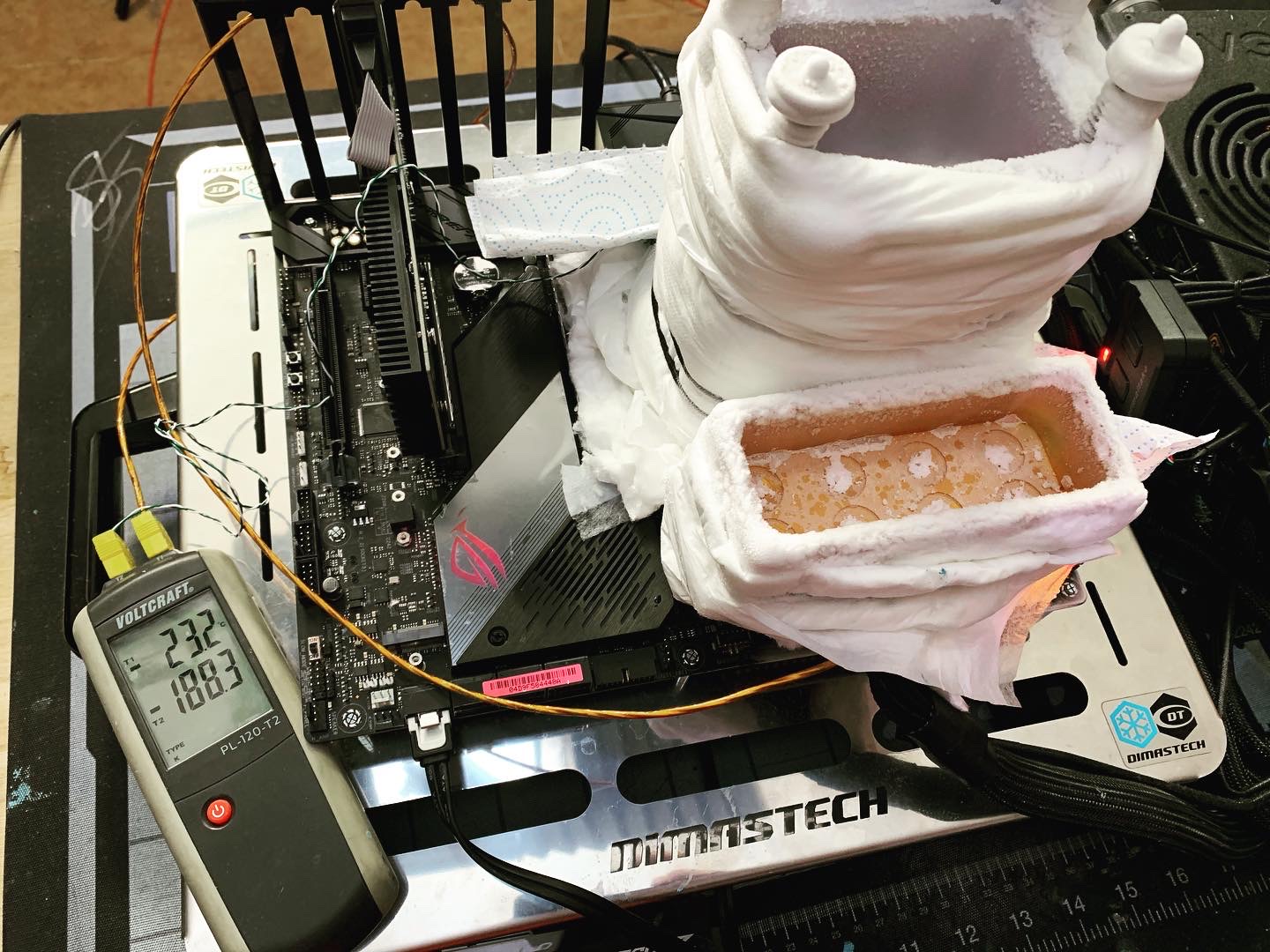Overclocker Uses LN2-Breathing Dragon, AMD Ryzen to Challenge Records
An overclocker dreams of soaring into first place with a 3D-printed dragon head and AMD chip.
Liquid nitrogen (LN2) can be an overclocker’s best weapon. But sometimes a competitive overclocker needs a friend too. Enter Ice Dragon, a wild, 3D printed dragon head that Max “Hardware Numb3rs” Parisotto is hoping will help him fly into first place ranking in the Cinebench R15 benchmark. Placed on top of the fan which carries vapor away from the LN2 pot, Ice Dragon looks like it's breathing smoke while its creator tries to set old records on fire.
On Friday, Parisotto submitted his score for the eight-core Cinebench R15 on HWbot but only placed fourth with a score of 2,985, compared to the top spot’s 3,003 (since then, the score’s slid to sixth place). He used an AMD Ryzen 7 3800X CPU, which he got to a clock speed of 5.648 GHz. Max plans to continue pushing the Ice Dragon build to take first place.
- Here’s how to become a professional overclocker
- Inside Intel's secret overclocking lab: How it’s pushing CPUs to new limits
- Intel 10th Gen processor news: Core i9-10900 Engineering Sample benchmarked
Parisotto still uses the same PWM fan, a Noctua NF-F12 industrialPPC-3000 PWM, with every LN2 pot he runs (and usually three to four total with the occasional inclusion of a 140mm model) but insists that the addition of a dragon head brings value.
“Extreme overclocking is a very competitive eSport, and when you push the system to extremes you need motivation,” Parisotto told Tom’s Hardware. “In order to be focused but also enjoy the bumpy ride, the Ice Dragon adds a touch of ‘coolness’ and is for sure more fun to have around than the standard black and noisy fan, especially in a livestream.”
The Ice Dragon head took a month to make. Parisotto teamed up with Warboy, a teammate from his PC modding team, Italian Extreme Modders. His partner designed, 3D printed and airbrushed the Ice Dragon head and installed LEDs for the beast’s eyes.
Once Parisotto received the head, he fine-tuned its neck hole to be able to accomodate the right amount airflow, as well as insulate the electric parts so they couldn’t withstand the extreme temperatures of LN2 vapors, which he said can hit -100 degrees Celsius (-148 degrees Fahrenheit).
“In order to preserve the system from moisture, I have the dense and cold vapors move as quickly as possible,’ Parisotto said. “For that I only trust the Noctua 3,000-RPM Industrial PPC fans that can resist the extreme task with ease. A normal fan [would] break [after a] very short time.”
Get Tom's Hardware's best news and in-depth reviews, straight to your inbox.
To emphasize the Ice Dragon’s cold breath, Parisotto installed a blue LED light intended for use in motorcycles in the mythical creature’s throat. It gives a blue/violet effect when the LN2 vapors are at peak flow.
Ice Dragon’s Mission: Cinebench Glory
The overclocker known as Hardware Numb3rs previously held first place ranking in eight-core Cinebench R15 1st with a Ryzen 7 3800X around the launch of AMD’s Zen 2 CPU microarchitecture.
In addition to the AMD chip, the system for his most recent attempt used:
- Motherboard: Asus X570 Crosshair VIII Hero
- Graphics card: MSI GeForce GT 710
- RAM: G.Skill Trident Z RGB DDR4-4600 C18 (2x 8GB)
- Storage: Crucial SSD
- Power supply: EVGA Supernova 1600 G2 (1600W)
- Dimastech Bench Table Extreme
- Kingpin Cooling Trex LN2 CPU Pot
Parisotto said he focused on pushing the chip’s maximum Infinity Fabric clock speed (FCLK) limit under extreme cold, eventually getting it to 1,600 Mhz.
“That is fundamental, since at low temperatures the system shuts off when over a certain frequency and reaching fullpot (when we approach the lowest temperature possible, around -192 degrees Celsius),” he explained. “But there is still a lot of work to do, including on the operating system, RAM and other small, but important, details.”
Parisotto livestreamed his push for first (video below), which admittedly hindered his performance. Because the show was running late, he didn’t insulate his motherboard like he usually would. It eventually got “soaked in water,” so he had to stop overclocking sooner than he would’ve liked.
But that wasn’t the last you’ll see of the Ice Dragon. Parisotto said Ice Dragon will be in his overclocking livestreams from now and, and that he’s going to use the dragon head within the next week or so to try to seize first place ranking in eight-core Cinebench R15 again. He’s already testing another type of RAM and frequency, including a Samsung B-die-based kit and Micron Rev E. He’s also planning on ditching Windows 7, an overclocking favorite, for a version of Windows 10 tuned for Cinebench.
One thing’s for sure. Whether Ice Dragon ends up seizing all the Cinebench glory with its next frosty attack or not, it’ll make a spectacular show.
You can watch Hardware Numb3rs’ livestream of Ice Dragon’s first run below.

Scharon Harding has over a decade of experience reporting on technology with a special affinity for gaming peripherals (especially monitors), laptops, and virtual reality. Previously, she covered business technology, including hardware, software, cyber security, cloud, and other IT happenings, at Channelnomics, with bylines at CRN UK.
-
SirCrono Reply
Name checks out!bigdragon said:Dragons make everything better! ;-)
(I might be biased.)



